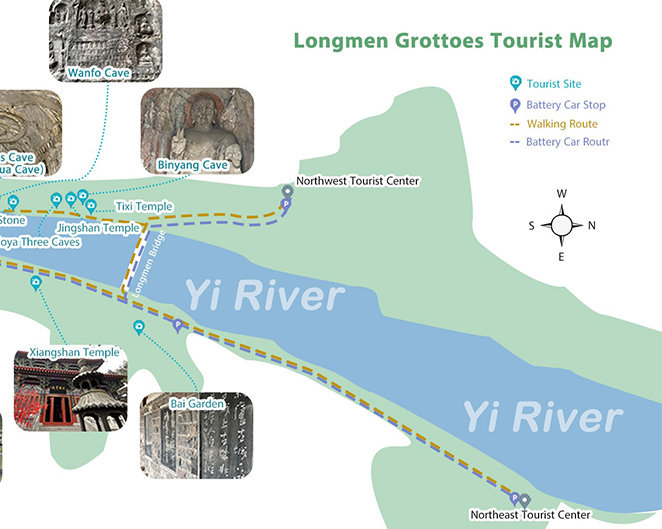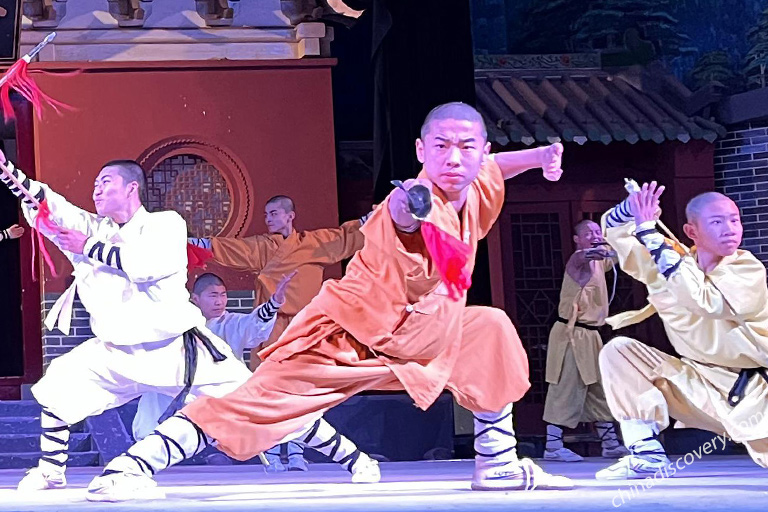What to See in Longmen Grottoes
Longmen Grottoes Scenic Area is divided into four parts: Caves on the West Hill, Caves on the East Hill, Xiangshan Temple and Baiyuan (Bai Juyi’s Tomb).
The West Hill is the highlight of Longmen Grottoes and you can spend most of your time here appreciating the Vairocana Buddha, Three Binyang Caves, Wanfo Cave, Guyang Cave, etc. East Hill can provide you with the best view of the grottoes across the river and Xiangshan Temple and Baiyuan have a quiet environment that is suitable for a leisure walk. Don’t miss the sites listed below when planning your Longmen Grottoes Tour!
✔ 3 Days Essence of Luoyang Tour
✔ 3 Days Luoyang Highlights Tour including Shaolin Kung Fu Experience
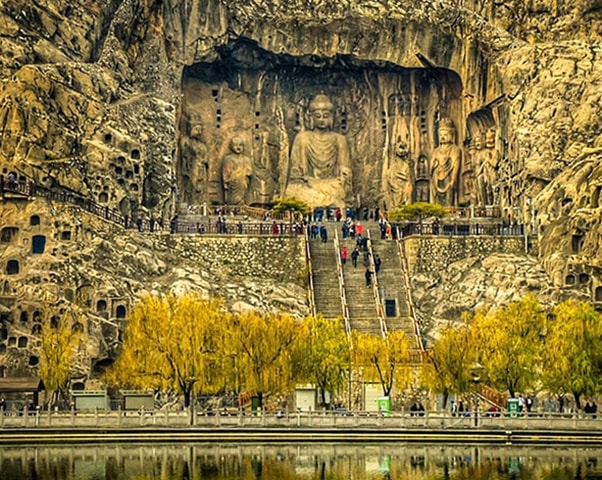

-
No.1: Vairocana Buddha (Fengxian Temple) 卢舍那大佛 (奉先寺)
Location: Caves on the West Hill
Fengxian Temple (Ancestor Worshiping Cave) is the largest of all caves on the west hill built between 672 and 675 for Empress Wu Zetian. This cave has the largest Buddha statue at Longmen Grottoes and is claimed to be the ultimate architectural perfection of the Tang Dynasty. Of the nine huge carved statues, the highly impressive image of Vairocana Buddha is sculpted on the back wall of Fengxian. It is said that Wu Zetian donated a great deal of money to complete this masterpiece. Hence, it is conjectured that the Vairocana Buddha was carved according to the appearance of Wu Zetian herself. Its graceful smile is termed a "Chinese Mona Lisa", but this sculpture is actually about 800 years earlier than the creation of the painting.
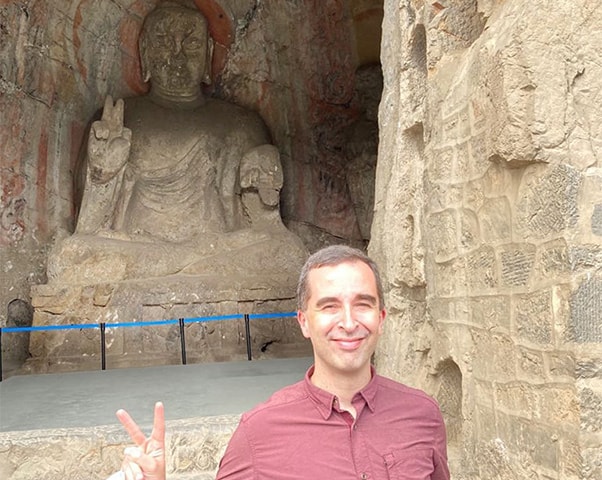

-
No.2: Three Binyang Caves 宾阳洞
Location: Caves on the West Hill
The Binyang Cave consists of three caves: Binyang Middle Cave, Binyang North Cave and Binyang South Cave. The 11 statues of the Buddha show northern characteristics (slim figure, thin face, fishtail robe) and traces of Greek influence. Among the three caves, the Middle Binyang Cave is the most prominent one. It was built by Emperor Xuanwu to commemorate his father Xiaowen, and also his mother. It is said that 800,000 workers created it over the period from AD 500 to 523. In the main hall of this cave, five very large Buddhist statues are carved all in Northern Wei Style. The Buddhas, arranged in three groups in the cave, are representatives of Buddhas of the past, the present and the future.
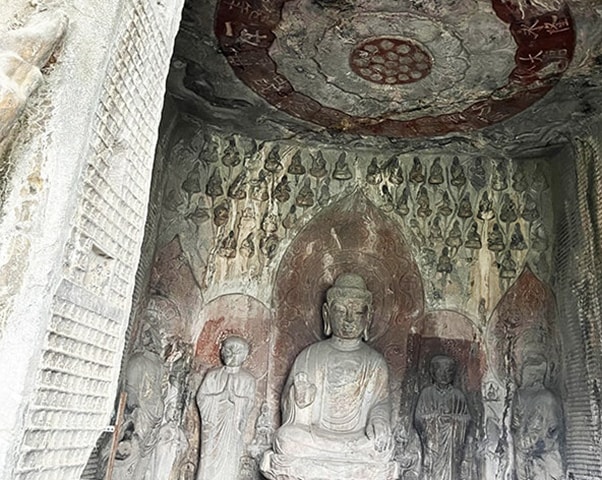

-
No.3: Wanfo Cave 万佛洞
Location: Caves on the West Hill
Wanfo Cave was built in AD 680 by Emperor Gaozong of Tang and his empress Wu Zetian. The cave got its name due to the 15,000 small sitting Buddhas engraved on its south and north walls. It houses a combination of one Buddha, two disciples, two bodhisattvas, two heavenly kings, two warriors and two lions. Wanfo Cave is a product of ancient craftsmen’s combination of rich imagination and real life, which fully embodies the prosperity and high achievements in culture and art of the Tang Dynasty.
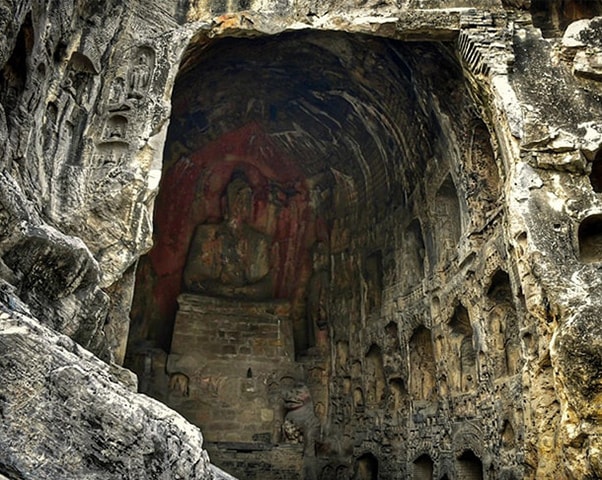

-
No.4: Guyang Cave 古阳洞
Location: Caves on the West Hill
Guyang Cave is regarded as the oldest Longmen Cave with carvings in the northern Wei style. It is the work of Emperor Xiaowen (AD 467 - 499). It attracted carvings sponsored by many of his noble members, officials and religious dignitaries, who approved his reforming policies. On the main wall there are three over-life-sized statues erected by the emperor. In the center is the Buddhist patriarch Sakyamuni, flanked by two bodhisattvas.
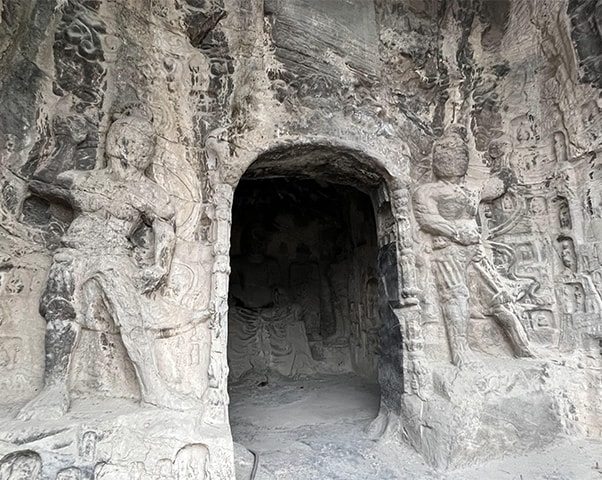

-
No.5: Medical Prescription Cave 药方洞
Location: Caves on the West Hill
Medical Prescription Cave or Yaofang cave got its name due to the 140 medical prescriptions of Tang Dynasty engraved on both sides of the entrance. Among these prescriptions, 65 can be recognized clearly, 42 partly damaged and 33 seriously damaged. They are said to treat 40 diseases covering internal medicine, surgery, neurology, gynecology, pediatrics and five sense organs. In this cave, visitors could learn from these engraved prescriptions that ancient China achieved a high level in medical science. Some prescriptions are still used today.
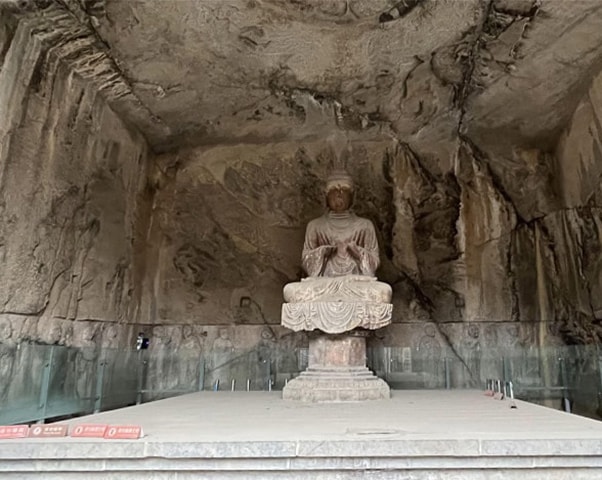

-
No.6: Caves on the East Hill 东山石窟
Main Caves: Kanjingsi Cave, Leigutai Three Caves, Erlianhua Cave
The about 20 large and medium-sized caves on the East Hill are all carved in the Tang Dynasty (AD 618-907). On the lower part of the three walls in Kanjingsi Cave are carved the twenty-nine ancestors of the legendary Arhats (11 in the main wall and 9 in the two walls) with an average height of 180 cm. It is the most exquisite group of Arhats in the Tang Dynasty. Leigutai Three Caves have a dome roof decorated with a gorgeous lotus-shape sunk panel.
Don’t forget to take a picture of the grottoes in the West Hill from here as it is the perfect place where you can have a full view of the sight across the Yi rive.
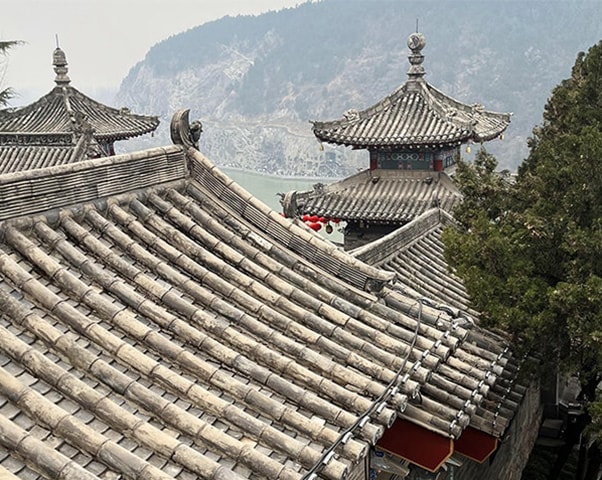

-
No.7: Xiangshan Temple 香山寺
Location: East Hill
Xiangshan Temple is ranked the first among the ten temples at Longmen. The present Xiangshan Temple was reconstructed in about AD 1707, during the Qing Dynasty. In 2002, the temple was expanded by adding the Belfry, the Drum Tower, some side rooms and the Hall of Mahavira and Hall of Nine Persons.
As you step inside the temple gate, you are overwhelmed with a sense of quietness and seclusion. The ancient red walls and green tiles along the slopes; the zigzagging lanes of hoary gray; the melancholy tones of mountain birds conjure up thoughts of remote antiquity and you are totally lost in this atmosphere.
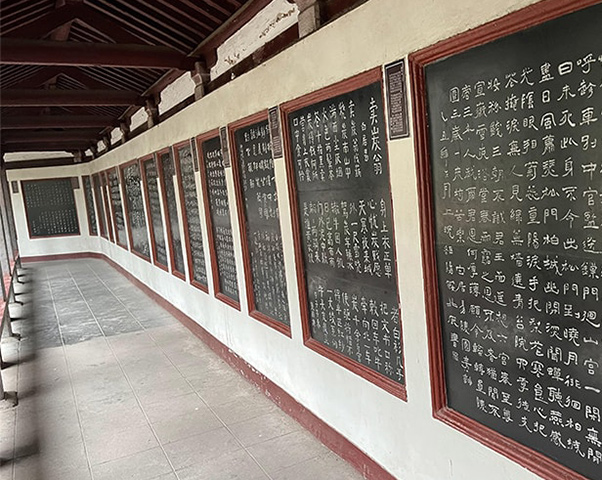

-
No.8: Baiyuan Garden 白园
Location: East Hill
The Baiyuan Garden is located at the east hill of Longmen, opposite slightly to one side of Longmen Grottoes across the Yihe River. On the peak called Pipa in this garden is the tomb of Bai Juyi (772 - 846), an outstanding poet of the Tang Dynasty. The tomb of Bai Juyi is a round earth mound, 4 meters high with a circumference of 52 meters. In front of the tomb stands a tombstone of 2.80 meters high, which reads, “The Tomb of Bai Juyi”.
Other scenic spots visitors could visit are Qinggu, Tingyi Pavillion, Letian Hall, Bai Pavillion, Daoshi Reading Room, etc.
How to Plan Your Travel in Luoyang
Usually, it takes 2 ~ 3 days to have a Luoyang tour. The highlights of Luoyang include Longmen Grottoes which is known as the finest examples of Chinese Buddhist art, 1900-year-old White Horse Temple (also China's first Buddhist temple), 2000-year-old burial site - Tianzi Jialiu Museum and beautiful Luoyang Museum with a lot of history to tell. Of course, you can't miss a Kung Fu exploration in Shaolin Temple (in Dengfeng city) if you visit Luoyang. It is only 55 km (about 1.5 hours' drive) away from Luoyang City.
☛ 2 Days Luoyang Longmen Grottoes Tour
☛ 3 Days Luoyang Kung Fu Tour
It's strongly recommended to extend your Luoyang tour to its attractive neighbors. After Shaolin Temple visit, you can spend 1 day exploring Zhengzhou or Kaifeng. If you are fond of nature, Mount Yuntai, Guoliang Village and Xiaolangdi Reservoir on Yellow River are recommended.
However, the best way to extend your Luoyang trip is starting a Xian Tour. Owning world-class treasures, Xian offers a lot to see and do. Taking a 1.5~2 hours high speed train, you can unveil an incredible experience of two old capital cities. It is quite popular to travel Beijing and Xian with Luoyang, because Luoyang is just located between them. Get inspired from our Xian Luoyang Tours now!
☛ 6 Days Ancient Xian & Henan Tour (Xian / Luoyang / Dengfeng / Zhengzhou)
☛ 8 Days China Ancient Capitals Tour (Beijing / Luoyang / Xian)
☛ 10 Days China Culture Tour Plus Shaolin Kung Fu Experience (Beijing / Xian / Luoyang / Dengfeng / Zhengzhou / Shanghai)
 Our Customers visited Luoyang Longmen Grottoes
Our Customers visited Luoyang Longmen Grottoes
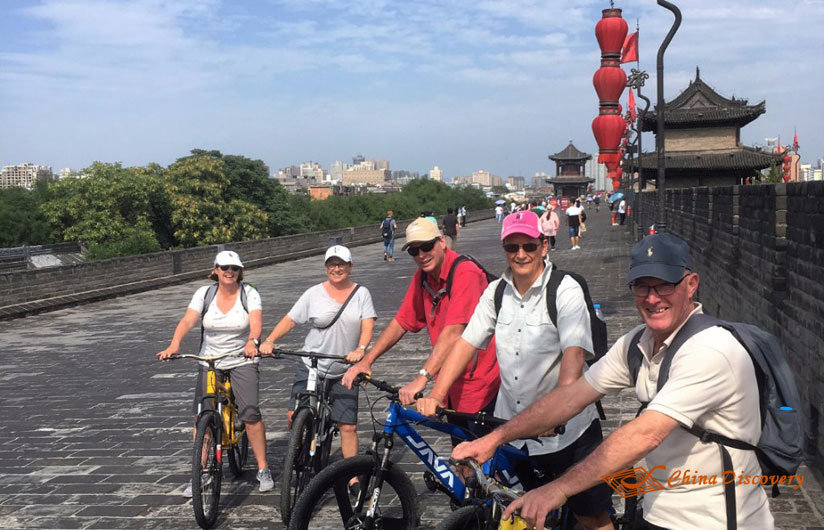 Our Customers visited Xian Ancient City Wall
Our Customers visited Xian Ancient City Wall
Get Inspired by Real Travel Stories of Our Customers
Luoyang and nearby Shaolin Temple are very popular with our customers. Since 2012, we have helped thousands of customers visited the region successfully. With our fully-inclusive private tour packages, all of our customers enjoyed their trips to magnificent Longmen Grottoes, legendary Shaolin Temple, educational Luoyang Museum, beautiful Yuntain Mountain, etc. Some of them even had the rare opportunities to take part in the grand International Peony Festival in Luoyang. Many customers suggest visit Luoyang with Beijing, Xian, Pingyao and Shandong in northern China to explore authentic Chinese culture. Below are some inspiring travel stories:
★ Cultural Immersion Trip in Ancient Capitals of China (Beijing - Taiyuan - Pingyao - Xian - Luoyang - Dengfeng - Zhengzhou - Kaifeng - Qufu - Mount Tai - Beijing)
★ Sweet Couple's 21-Day Northern China Exploration (Beijing - Datong - Mount Wutai - Pingyao - Xian - Luoyang - Jinan - Taian - Qufu - Beijing - Chengde - Beijing)
★ 19 China Trips of Vijay’s People - Spreading around Family & Friends of Wonder’s Good Service (Beijing / Luoyang / Xian / Chengdu/ Guangzhou / Guilin)
★ Sucking Cultural Fragrance from Time-honored Architectures (Kathmandu - Kunming - Lhasa - Shigatse - Xian - Luoyang - Pingyao - Datong)
Read more China travel stories > or find recommended similar tours>.
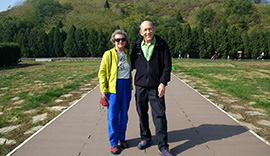
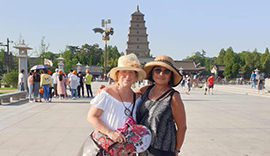 Our Delighted Customers
Our Delighted Customers
Top Luoyang Tour Packages
Helpful Luoyang Travel Guide
- Longmen Grottoes
- How Get to Longmen Grottoes
- White Horse Temple
- Luoyang Museum
- Luoyang Peony Festival
- Top Attractions in Luoyang
- Things to Do in Luoyang
- Family-friendly Activities Luoyang
- Luoyang Transportation
- Luoyang Maps
- Where to Stay in Luoyang
- Luoyang Weather & Best Time
- How to Plan a Luoyang Tour
- All Luoyang Travel Guide
Helpful Henan Travel Guide
Recommended Luoyang Tours
Top 3 Luoyang tours chosen by most customers to explore Luoyang in the best way. Check the detailed itinerary, or tailor your own trip now with us.

3 Days Shaolin Kung Fu Tour including Luoyang Highlights
Luoyang / Dengfeng / Luoyang

8 Days China Ancient Capitals Tour
Beijing / Luoyang / Xian

11 Days Essence of China Culture Tour by Bullet Trains
Beijing / Pingyao / Xian / Luoyang / Shanghai

























